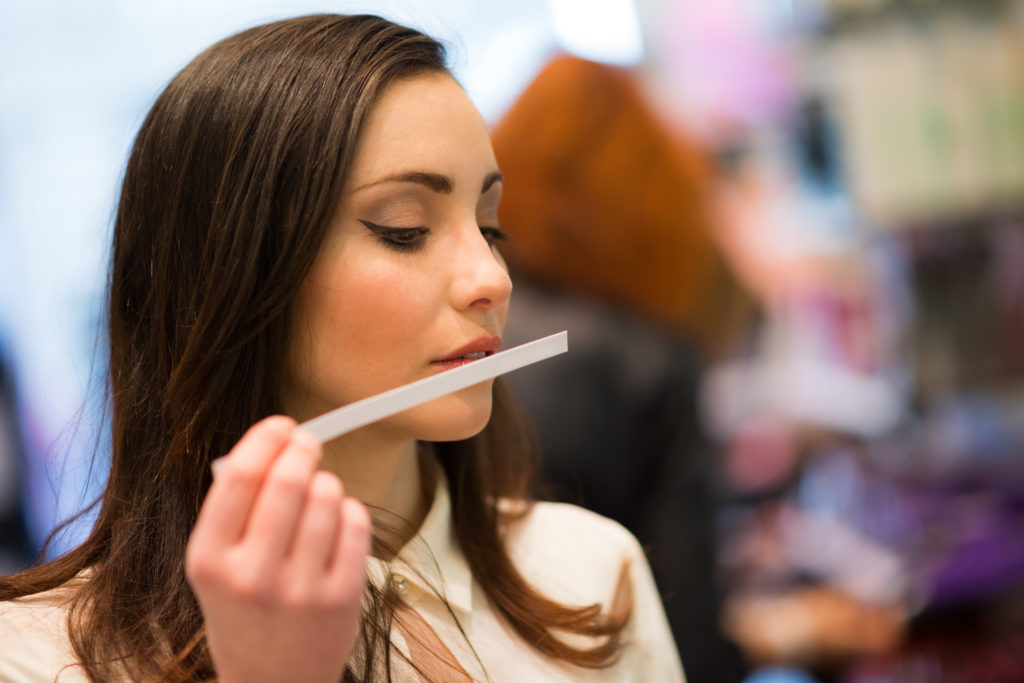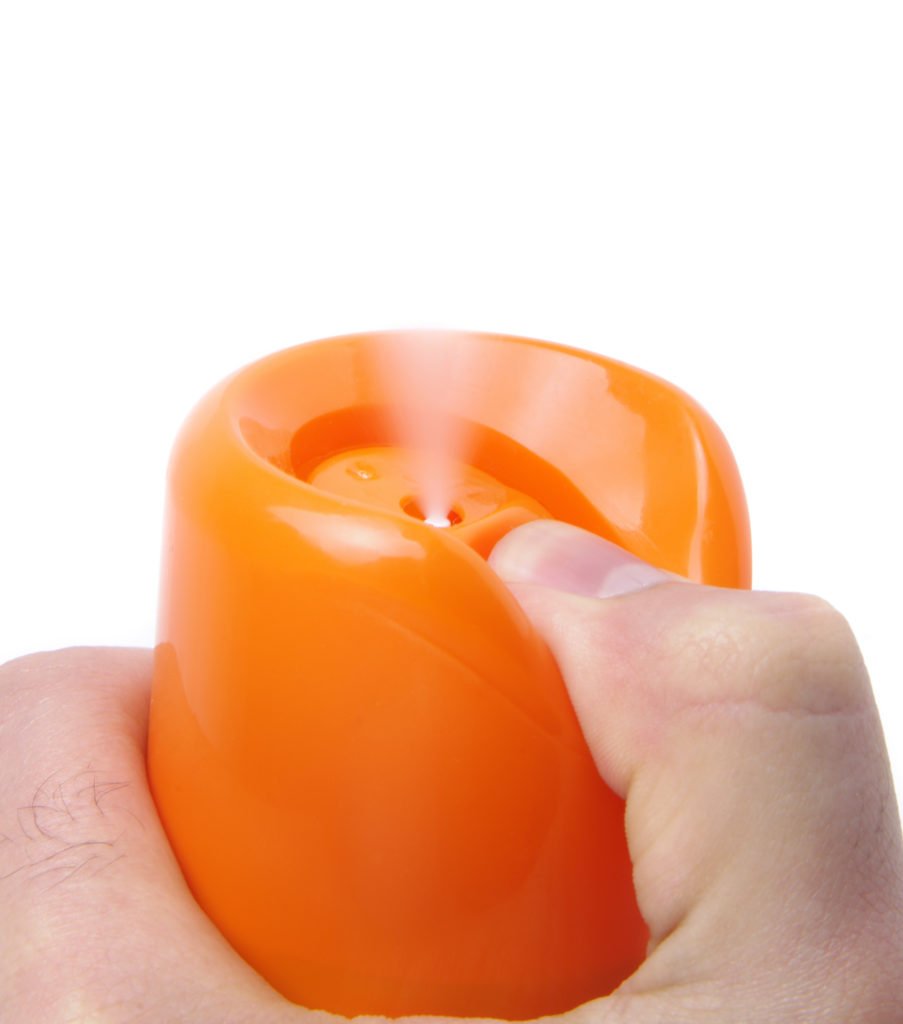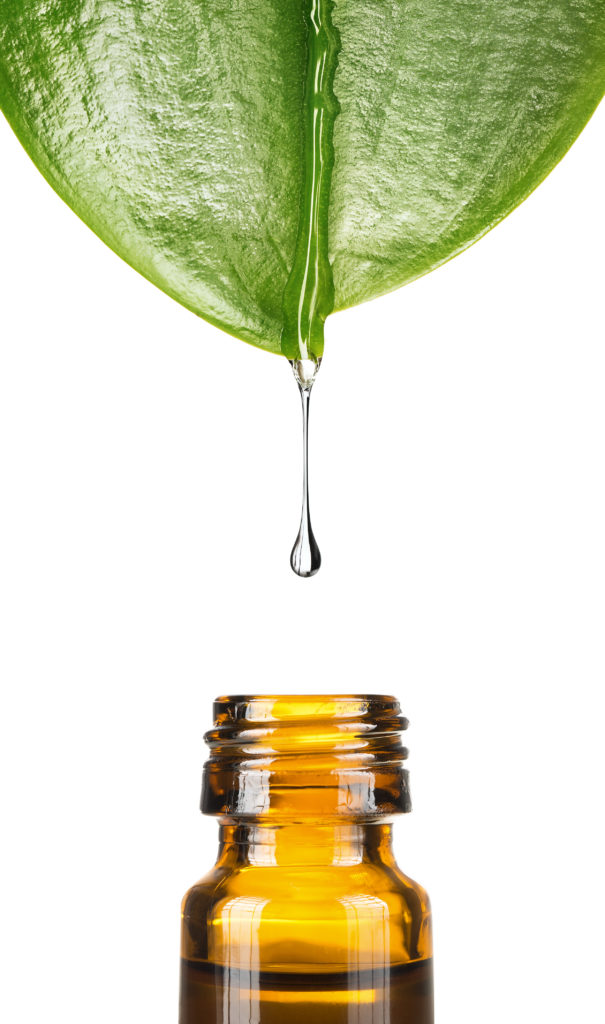
Inside This Post: Don’t let the ingredient listed as fragrance fool you. It’s code for dozens of undisclosed chemicals. Safe fragrance and non toxic solutions to use instead.
This post may contain affiliate links. You can see my disclosure policy here.
The Problem with Fragrance Found in Products
From perfumes, to room deodorizers to cleaning products, fragrance is everywhere. It may help your home smell nice and mask unpleasant smells, but “fragrance” is another blanket term for hundreds of hidden harmful chemicals that can cause irritation, allergic reactions and even more serious health problems when used long term.
Luckily, there are some natural alternatives that smell great, won’t harm you and don’t pollute the air.
What’s in Perfume and Fragrance?
Although the word fragrance may sound harmless and self explanatory, when you see it listed on a bottle or container, there could be a whole list of undisclosed chemicals that make up “fragrance.”
Fragrance is one of the most ubiquitous cosmetic ingredients on the market. Even products claiming to be “all-natural” or “unscented” may contain this ingredient.
The problem is that because fragrance is considered a trade secret, cosmetic companies don’t have to disclose what goes into their products and your label will never tell the whole truth.
A loophole in the Federal Fair Packaging and Labeling Act of 1973 (which requires companies to label ingredients in products they create, except for fragrance) allows companies to put unsafe and untested chemicals into products and consumers have no way of knowing what’s fully behind the label.
Research and testing shows that “fragrance” is often made up of a formulated concoction of chemicals – up to hundreds of chemicals – in fact can be hidden under the label of fragrance.
In 1986, the National Academy of Sciences recommended Congress test fragrances for neurotoxicity. Unfortunately we are still waiting on that study here in 2019, however, other studies have been done.
The bottom line – a large percentage of the chemicals that were found in these fragrances had not been assessed for safety by the USDA,International Fragrance Association, or any other organization still to this date. In fact, the only limitation on fragrance manufacturers is that they cannot use banned substances.
The EPA tested fragrances for chemicals in 1991 and found a list of the following toxic perfume chemical ingredients: acetone, benzaldehyde, benzyl acetate, benzyl alcohol, camphor, ethanol, ethyl acetate, limonene, linalool and methylene chloride – usually in some kind of a combination.
When the Environmental Working Group (EWG) tested the chemicals in some popular perfumes they found that on average there were 14 unlisted chemicals in each perfume, some of which are known hormone disruptors and allergens.
Manufacturers today use approximately 3,100 ingredients in different combinations to create perfumes and fragrances.
A report by the National Academy of Sciences found that 95% of chemicals used in fragrances are synthetic petrochemicals (derived from petroleum).
Misleading Labels Trick You Into Thinking They’re Safe
Be on the lookout for labels with the words fragrance, aroma, phthalates, or parfum, and opt for 100 percent pure essential oils or DIY recipes instead.
Labels that say “all-natural” or “natural” may lead you to believe they’re safe, but that’s not true either.
These labels are misleading and false and the majority of these products are not organic, nor derived from nature at all but loaded with chemicals.

The Most Harmful Chemicals Found in Fragrance
The US has banned just 11 chemicals from cosmetics, while Europe and Canada have banned over 1300!
According to InvisibleDisabilities.org, these chemicals can cause central nervous disorders, kidney damage, respiratory failure, ataxia and many less serious but still troubling symptoms such as GI tract irritation, dizziness, fatigue and more.
Here are the three major chemicals (out of the 3,100 used in fragrances) that do the most damage. The safest thing you can do is stay away from anything labeled fragrance and here’s why:
-
ENDOCRINE DISRUPTORS & PHTHLATES
Phthlates is a chemical is linked to autism, ADHD, and neurological disorders and is banned in EU, Japan, South Korea, Canada, and China.
This study links phthalates to cancer, endocrine disruption, and developmental and reproductive toxicity. Other studies link phthalates to sperm damage and altered genital development in boys.
The Washington Post reported on a study from that linked phthalates and endocrine disruptors to a more than 6 point drop in IQ for children whose mothers were exposed to phthalates during their pregnancy. If you are pregnant, you need to stay away from all products with fragrances to protect your baby.
-
FORMALDEHYDE
Formaldehyde is often found in plug-in fragrance warmers and air fresheners, as well as dry shampoos and spray cans.
The CDC admits that formaldehyde is a known human carcinogen and the more we are exposed to it have an increased change of developing cancer. Unfortunately formaldehyde is not only found in our perfumes and fragrances but also in many kinds of conventional furniture (assemble your own furniture) as well as building materials.
-
MUSK KETONE
According to the EWG, studies have shown this synthetic chemical to concentrate and build up in fatty tissue and breast milk. It’s suspected to cause cancer, be a hormone disruptor and is extremely toxic to the environment.
-
OBESOGENS
Ingredients found in fragrances, like phthalates, are considered “Obesogens” which means they CAN cause you to gain weight independent of what you eat or the activity you get.
More studies have reported a range of undisclosed toxins. Styrene is one of them that was determined in 2011 by both the National Toxicology Program and the National Academy of Science, to be “a reasonably anticipated to be a human carcinogen.”
The bottom line? Your family would do best to steer clear of toxic fragrances for all the dangers they pose.
Scented Products Create Problems
A lot people think they’re allergic to fragrance, but the compounds in fragrance are allergens, they’re irritants.
So what’s the difference between an allergen and an irritant? In simple terms, a true allergen causes a person’s immune system to release chemicals to fight the invader. On the way to the battle, inflammation could result — eyes could water, nose could fill, and so on.
An irritant, on the other hand, doesn’t provoke the immune system but it can make eyes water or noses run, and so on.
Their study found over 24 chemicals were discovered that could act as allergy triggers causing a myriad of symptoms like headaches, dizziness, rash, hyperpigmentation, violent coughing, vomiting or skin irritation.
The chemicals undisclosed in “fragrance” can cause symptoms such as:
- headaches
- difficulty breathing
- runny and stuffy nose
- reduced lung function, respiratory irritation, wheezing, asthma
- allergic reactions
- birth defects
- skin allergy like contact dermatitis (an itchy, red rash on the skin)
- mucosal symptoms
- migraine headaches
- skin problems
- cognitive problems
- gastrointestinal problems
- and the list goes on!
People who already have allergies, like seasonal allergies or allergies to indoor allergens like molds and animal allergens, may be more likely to experience fragrance sensitivities, according to everyday health.

Are Unscented Products Any Better?
Sorry, the short answer to this question is no.
“Unscented” is a sneaky term for smells being masked.
It’s common practice that unscented products contain chemicals to mask the smell of the other fragrant chemicals in the product. The product is still basically fragrance, but without any smell and created with a concotion of chemicals.
Safe Alternatives to Fragrances and Perfumes
I know the list of ways chemicals can harm you, and your family can make you feel angry, and even overwhelmed. Eliminating chemicals from your life is not an over-night process. It takes time.
When I first decides to get tackle the “fragrance” issue, I
These are some of my favorite ways to smell nice and make my home smell good, without chemicals or synthetics.
Here are some cleaner scent options for you to consider if you want to avoid toxic perfume chemicals:
Essential Oils
There are so many essential oils out there to create your own blend, or use a standard scent or special mix to wear as perfume or diffuse throughout your home.
You can get the Plant Therapy starer set (and includes all my favorite scents) and comes with everything you need to started with essential oils including roller balls to make your own non-toxic perfume or the 14-piece essential oil set is a bargain for all the oils you’ll get as well.
I have several of these lava rock bracelets that I can add a drop of essential oil to and wear all day. I love having them on hand to smell and help manage my emotions. My kids also wear and use them too, and were especially helpful with the first day of school jitters.
A cautionary note: be sure to dilute essential oils with a carrier oil (such as coconut oil or olive oil) before putting on your skin and don’t mix hot essential oils with warm water, like in the bath.
My Thoughts on Essential Oils Companies:
I have tried Young Living and Doterra, but can safely say I only recommend Plant Therapy because I have found they are the most transparent essential oil company available as well as being the only company to use third-party laboratories to test the quality of their oils, and I commend them for that. Moreover, they publish the tests online, allowing everyone to see the results, unlike other companies who may or may not test, yet don’t publish results. Their oils are chemical free and tested before offered to the consumers
I find that MLM companies such as Young Living and Doterra lack scientific research and testing, transparency and are much more expensive than Plant Therapy.

Diffuse Essential Oils at Home & In the Car
Most DIY perfumes and fragrances will include essential oils, so having those essential oils on hand can be helpful too.
I have several diffusers around the house and they make the house smell great. We even keep one in the bathroom to switch on when it’s needed.
I fill with water to the line and then add a few drops of my favorite essential oils, or whatever I’m in the mood for, and it instantly makes things smell so good!
This has been my favorite diffuser so far and I’ve have tried a handful (as my husband cringes!) This is the car diffuser I keep in the car and has been great for long drives and road trips, or trips from hockey practice when the stank smell hits. The black matches my cup holders so it also blends in and disappears.
Go with a Safe & Toxic Free Perfume
If you don’t have the time to DIY and test out perfumes, this Alitura Presence perfume is made with natural ingredients and smells amazing!
Here’s the description of the scent from their website and creator:
- Top – The scent opens with the freshness of Cucumber and Aloe with a delightful Ylang Ylang (flower).
- Mid/Heart – The heart is a plethora of Hydrated Cedar and Green Forest giving it a robust fusion of coolness.
- Base/Drydown – The dry-down has warm smolders of smooth Sandalwood and aromatic Cardamom with soft breezes of Tobacco from a Fine Leather Satchel.
Red Flower Scents is another good option! They sell an organic perfume concentrate and organic perfume oil roll-on.
Givescent is made with a blend of oils and essential oils, these scents are free of alcohol, formaldehyde, parabens, phthalates and sulfates. They are also cruelty free and they donate a portion of every sale to Every Mother Counts and Women for Women International.
Safe Scents for Men
Women aren’t the only ones dealing with chemicals in their perfumes and fragrance. Men are just as exposed in their cologne! My husband goes between the Duke Cannon Men’s Solid Cologne in Land (redwood) scent and the Otter Wax Spruce Cologne Solid.
More Safe, Organic and Chemical Free Options
- This all natural option is great to keep in the bathroom to get rid of smells
- Rare Earth Naturals provides 100% natural essential oil based aromas, candles, diffusers and more. Artisan-crafted in small batches, these products are made in the USA with products that are safe, synthetic free and responsibly sourced.
- Pure Natural Diva carries synthetic and chemical free scents, as well as soaps, skincare and more.
- Lurkmade: This brand uses only pure essential oil in organic jojoba – no water or alcohol.
Be Safe, Stick These These Rules Around Fragrance
Since we can’t always know the exact ingredients in fragrance, perfume and scented items, here are some tips to help you avoid the toxic chemicals without sacrificing scent:
- Avoid products that don’t fully disclose ALL of it’s ingredients. If you see packing without an ingredient list, don’t buy it.
- If a product lists “fragrance” or “perfume” on the label, that scent can be made of dozens, if not hundreds of ingredients, many of which can be harmful chemicals and therefore it’s not a full disclosure – avoid!
- Check the EWG’s Skin Deep database and use the Think Dirty app on your phone to scan or type in the product and check for unsafe ingredients and the level of toxicity of the product you’re using or thinking of buying.
- Search for products that only use essential oils to add scents, and use pure therapeutic grade essential oils at home (guaranteeing they don’t have synthetics added to them) to scent your home.
- Organic and botanical fragrances are your best choice for fragrances and perfumes.
It’s important to always read labels carefully. Do the same for your household products, cosmetics, personal care, skin care and everything else. Your family’s exposure really does add up over the course of a day and over time.
To gain a full understanding of what harsh toxins are lurking in your home and what happens when you breathe, eat, touch or smell them, Download Your Free Starter Guide to Environmental Toxins Hiding in Your Home